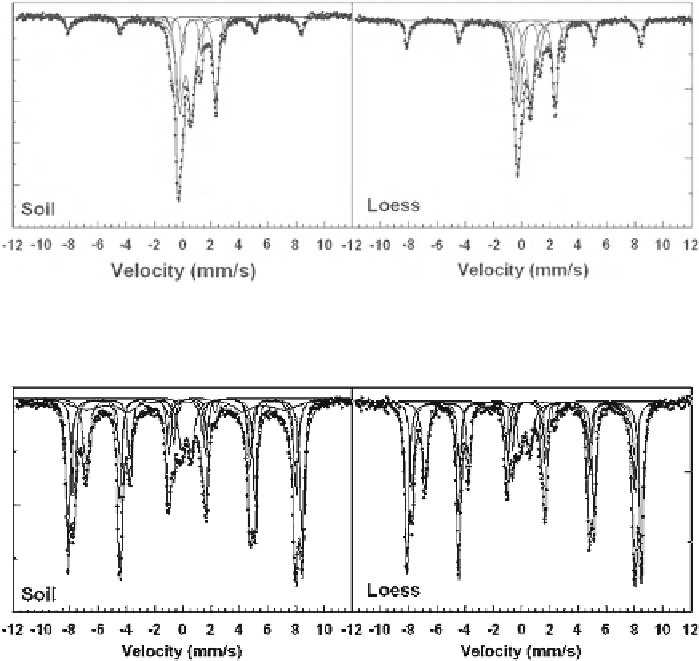Chemistry Reference
In-Depth Information
Fig. 3.45
RT spectra of topsoil and underlying loess
Fig. 3.46
RT spectra of magnetically separated topsoil and underlying loess
As a first example, a sample from the topsoil and one from an underlying loess
of a paleosol-loess sequence at Xiadong in the Jixian loess section (China), will be
considered. The RT Mössbauer spectra of soil and loess show a series of central
doublets, which can be attributed to illite. Apart from these doublets the sextet
typical for soil hematite is observed (Fig.
3.45
).
However, it is well known that these soils, which possess an even higher magnetic
susceptibility than the underlying loess, contain other magnetic components such as
magnetite and maghemite. Apparently, their spectra fall below the detection or
analyzing limit of MS. After the sample was submitted to a wet magnetic separation
in a Franz isodynamic separator a totally different picture appeared in the Mössbauer
spectra (Fig.
3.46
). The sextets of magnetite, maghemite and of a more course-
grained hematite could be adjusted to the spectrum of the soil, whereas for the loess
sample only the sextets for magnetite and hematite were resolved. This was the first
time that the magnetic components of loess and paleosol were visualized in a direct
way [
273
,
274
].

